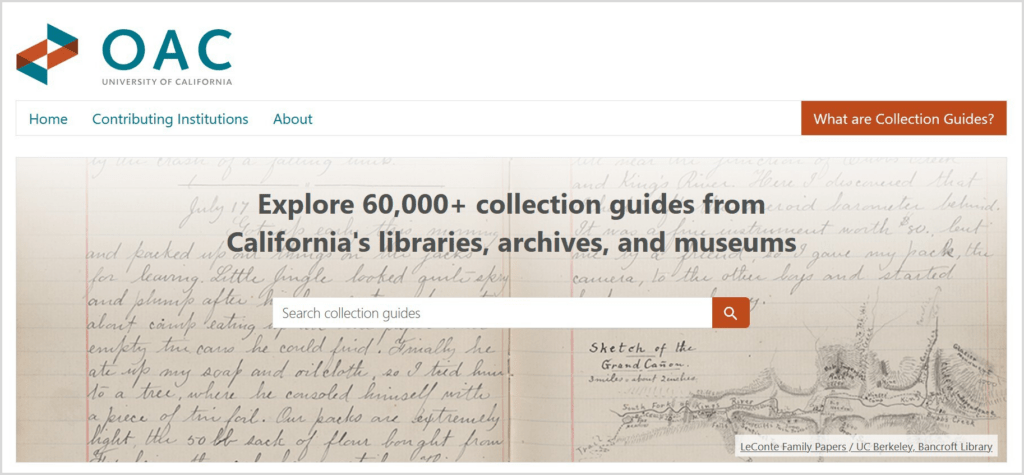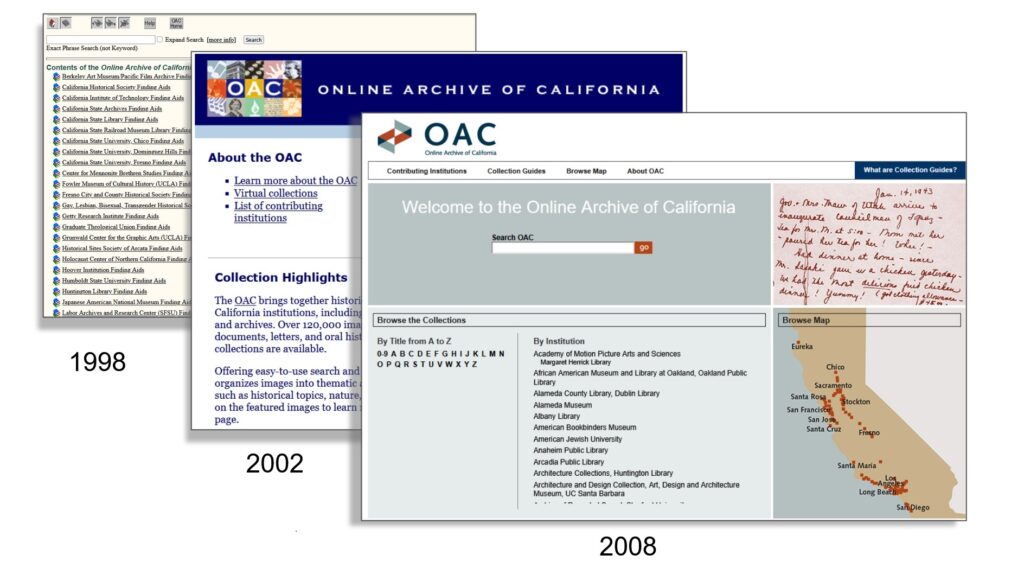Online Archive of California (OAC) update
In July 2025, CDL launched an upgraded version of the Online Archive of California (OAC), completely rebuilt with community-supported open source technologies. This upgrade is a major milestone in OAC’s decades-long commitment to public service, and provides a new footing to continue promoting visibility of archival collections stewarded by California institutions.

About OAC
Since 1998, OAC has brought together detailed descriptions of primary resource collections – or “finding aids” – from contributing institutions throughout California. OAC has evolved several times over the years in order to adapt and respond to emerging technologies, archival description encoding standards, and contributor and researcher feedback.

Today, OAC provides free public access to over 78,000 finding aids maintained by more than 350 statewide partners, including libraries, special collections, archives, historical societies, and museums, as well as the ten University of California campuses.
About the upgrade
With the last major OAC upgrade dating back to 2008, this work was motivated by the need to modernize the underlying infrastructure with current and well-supported technologies. We embraced this as an opportunity to update the website, while also streamlining finding aid publication workflows. The new OAC system features:
- A modernized public interface that is mobile device-responsive and complies with Web Content Accessibility Guidelines (WCAG) version 2.2
- New options for searching and browsing across all finding aids
- An upgraded dashboard that provides “self serve” options for OAC contributing institutions to readily preview and publish their finding aids.
Building on a solid technical foundation, we are now positioned to make incremental improvements to the service to better meet the needs of OAC contributing institutions and researchers. Since the launch, we have continued to iterate on the new system, including work to tune site performance and speed and improve finding aid publication workflows. We look forward to building out the system further to incorporate contributor and user feedback. Looking ahead, our work will also be guided by the findings from the CDL-coordinated “Building a National Finding Aid Network” research project.
We are grateful to OAC’s contributing partners and the broader OAC community for their support. Your collection guides and outreach services are at the heart of OAC, and we look forward to working with you to continue to advance the next era of this long-standing platform.
Let us know what you think!
We’ve prepared videos to help you get familiar with the new design and features of OAC:
We welcome your feedback as you navigate the new OAC website. Let us know what you think!
